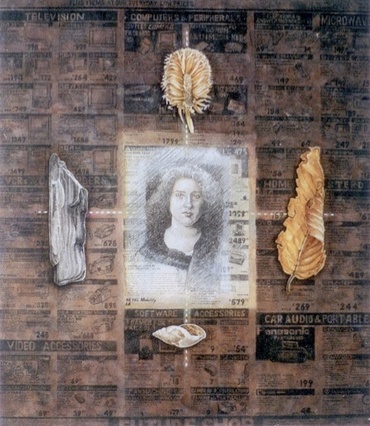The Ideas
|
My work revolves around realism and the question, what constituent parts are involved in our perception of reality? Today, this is a common question, but in the 1980's it was not. At the time, I worked in the genre of photographic realism, and spent a great deal of time thinking and working through the terms objective and subjective reality as they applied to art making.
In the art world, objective was linked to realism, a recording of what was in the external world, much like a photograph. Subjective was viewed as an expression of an artist's internal vision, more of an interpretation. I questioned whether the 'subjective' expressive styles being used were true visual representations of subjective experience or just a culturally accepted semiotic? As all direct experience had to pass through ones senses, would not all representations be rendered subjective at the instant of perception. My thinking culminated in an experiment conducted with the help of my classmates and Michael Fernandez, our drawing instructor. We found that work drawn from subjective experience tended to look more 'real' than work produced from an objectively analyzed, real and present model. Additional details pulled out of memory supplied contextual information that fleshed out the drawings. Direct objective observations in turn, produced drawings that tended to show bits and parts floating in uncertain, less recognizable or legible space. The illusion of reality was more convincing when embroidered by experience, associations and memories. Was it possible that our day to day perception of reality is a construction of parts rather than a mirror image? Since then, I have discovered that there is a striking correlation between making an object in paint, with how our brain constructs our working sense of reality. I continue to be endlessly interested in the inside and outside, Intuitive/ logical sense of being and in the question - what is true? My art practice has woven and blended into various scientific, philosophic and semiotic fields of study which also probe how perception works and which elements affect it. How do we sort, organize and think about reality in the way we do? When is knowing conscious, unconscious, logical or intuitive? Are these separations correct or useful? How do we know? How do we know what is real? * (Nothing is in the mind which was not first in the senses--"'Nihil est in intellectu quod non prius fuerit in sensu.') |

